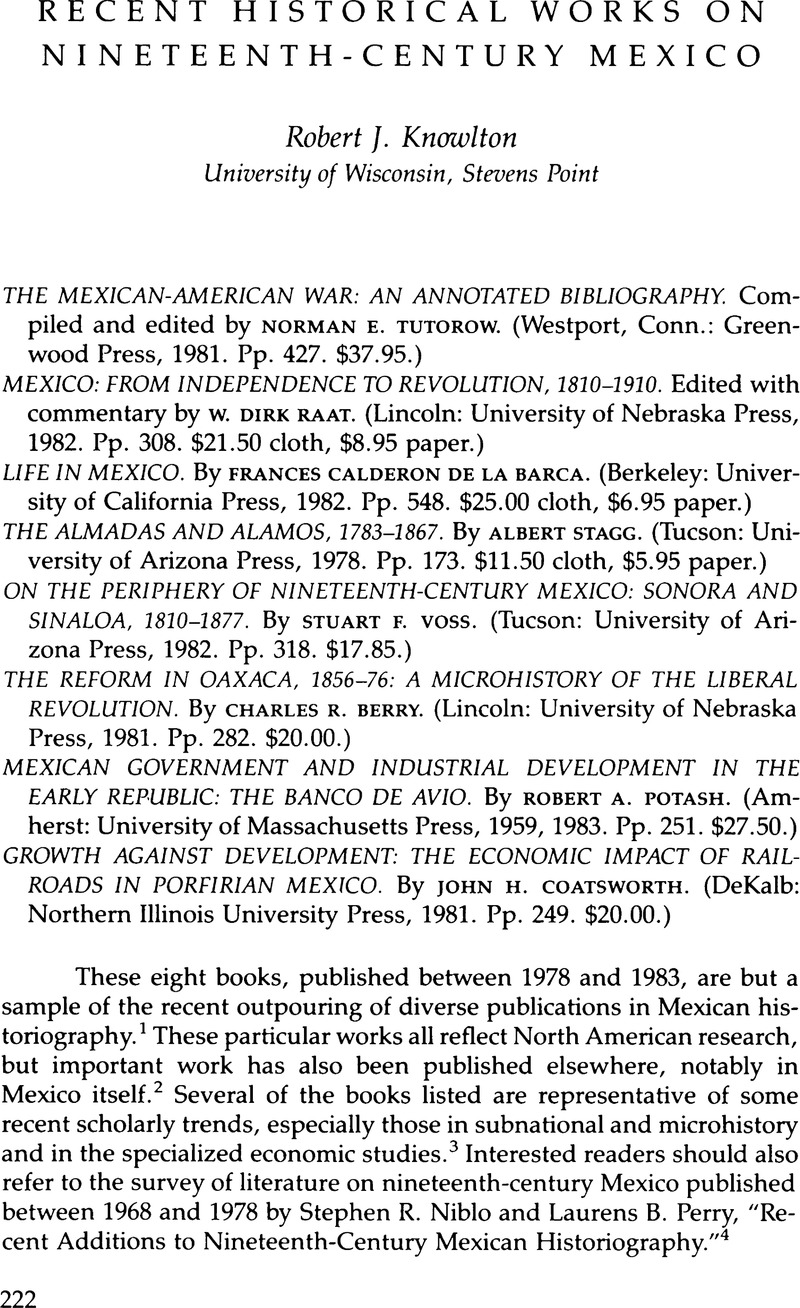No CrossRef data available.
Published online by Cambridge University Press: 12 October 2022

1. Life in Mexico by Frances Calderón de la Barca is a reprint of the original 1843 edition, and Potash's Mexican Government and Industrial Development in the Early Republic: The Banco de Avío was first published in 1959 in Spanish (Mexico: Fondo de Cultura Económica).
2. For example, Moisés González Navarro, Anatomía de poder en México, 1848–1853 (Mexico: El Colegio de México, 1977); Gerald L. McGowan, Prensa y poder, 1854–1857 (Mexico: El Colegio de México, 1978); Miguel Mejía Fernández, Política agraria en México en el siglo XIX (Mexico: Siglo Veintiuno, 1979); and Leticia Reina, Las rebeliones campesinas en México, 1819–1906 (Mexico: Siglo Veintiuno, 1980).
3. Among other recent monographs in English that might be included are: Paul Vanderwood, Disorder and Progress: Bandits, Police, and Mexican Development (Lincoln: University of Nebraska Press, 1981); and Mary Kay Vaughan, The State, Education, and Social Class in Mexico, 1880–1928 (DeKalb: Northern Illinois University Press, 1980).
4. LARR 13, no. 2 (1978):3–45.
5. Charles H. Harris III, A Mexican Family Empire: The Latifundio of the Sanchez Navarro Family, 1765–1867 (Austin: University of Texas Press, 1975).
6. Pueblo en vilo was published by the Colegio de México in 1972. It was translated by John Upton as San José de Gracia: Mexican Village in Transition (Austin: University of Texas Press, 1974).
7. Berry's conclusions for Oaxaca differ markedly from those of Jan Bazant, a leading student of the liberal attack on ecclesiastical property in central Mexico. Bazant found that buyers of church property were to a large extent from the merchant class, that many foreigners participated, and that there was large-scale speculation. None of this was true of Oaxaca, where there were few foreigners and merchants. Bazant also concluded that the Reform in central Mexico facilitated and encouraged industrial capitalism and economic growth during the Porfiriato; this was not so in Oaxaca. See Berry, pp. 188–89; and Jan Bazant, Alienation of Church Wealth in Mexico: Social and Economic Aspects of the Liberal Revolution, 1856–1875, edited and translated by Michael P. Costeloe (Cambridge: Cambridge University Press, 1971).
8. For another judgment on the qualified success of the Reform, see Robert J. Knowlton, Church Property and the Mexican Reform, 1856–1910 (DeKalb: Northern Illinois University Press, 1976).